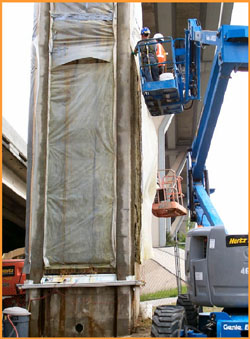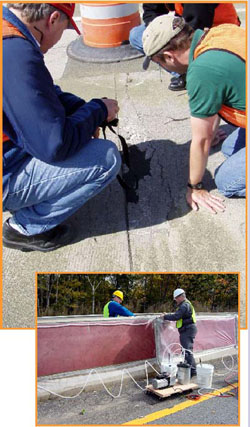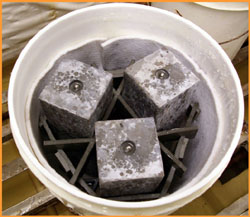Archived: Selection, Implementation, and Evaluation of Field Application and Demonstration Projects
The Federal Highway Administration's (FHWA) Alkali-Silica Reactivity (ASR) Development and Deployment Program will focus on the use of different prevention and mitigation techniques for new and existing concrete pavements and structures. This effort will address the specific concrete durability distress mechanism of ASR. Through past research efforts, certain technologies now exist that may help prevent or mitigate the nation's ASR problem.
Under the ASR Development and Deployment program several field application and demonstration projects will be deployed to determine which technologies work best in preventing and mitigating ASR. FHWA will take the research "out of the lab" and deploy this knowledge in the field.
The FHWA will assist state departments of transportation (DOT) in executing ASR field trials by:
- Providing technical guidance (including presentations and training),
- Working together with the state DOT in selecting the appropriate treatment for the structure in question,
- Providing appropriate federal funds for prevention and mitigation techniques,
- Instrumenting the structure for data collection,
- Designing and implementing monitoring programs,
- Evaluating and collecting data from the field site, and
- Analyzing data to determine the efficacy of the technology used.
Want your state to participate?
All efforts will be conducted in collaboration with state DOT personnel to ensure full implementation of the field trial. Appropriate funding will be provided by FHWA for selected projects.
For more details and requirements contact Gina Ahlstrom at gina.ahlstrom@dot.gov or at (202)366-4612.

Electrochemical treatment on ASR-affected columns in Houston, TX

Pavement joint damage on an ASR-affected pavement near Mountain Home, ID (top); Vacuum impregnation treatment on ASR-affected highway barriers near Leominster, MA

ASTM (American Society for Testing and Materials) C1293 Laboratory

